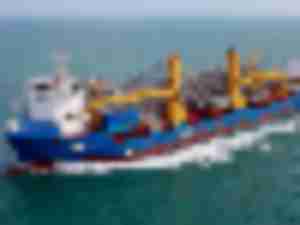Ports of LA and Long Beach: Can Clean Air Action Plan transition harbor trucks to zero emissions by 2035?
At the ports of Los Angeles and Long Beach, surging imports have left boxships awaiting berths and they are piling up like cars on the LA freeway at rush hour. However, new investments in electrical cargo-handling and electric trucks could streamline port operations, reduce emissions and lower costs. The Southern California ports plan to transition all diesel trucks working the ports to zero emissions within fourteen years. Can the goal of zero emissions really be achieved?
2020: The year of living virtually
For those in international shipping and trade, 2020 became the Year of Living Virtually as dozens of conferences and trade shows eschewed cancelling due to pandemic travel restrictions and opted for going digital. And the WCA World, a networking association of independent international freight forwarders, has taken this online technology one step farther, opening up a glimpse into a virtual world once imagined as science fiction rather than an everyday reality.
Ports of LA and Long Beach: Can clean air action plan revolutionize port operations?
On February 4th at the Port of Long Beach State of the Port address, Mario Cordero, executive director of the Port reported that 15% of Long Beach operations are zero emissions and electrical. And Cordero emphasized he was confident that the Ports of Long Beach and Los Angeles would meet their Clean Air Action Plan (CAAP) goals of zero emission cargo-handling equipment in 2030 and zero emission harbor trucks in 2035. But it could be a race against the clock as currently only about 7% of the cargo-handling equipment in the Port of Los Angeles and 15% in Long Beach is fully electrical.
Port of LA’s Seroka reports 5.5% increase in January imports but congestion continues
At his February 17th media briefing Gene Seroka, executive director, Port of Los Angeles reported that in January 2021, the Port recorded the following container movements:
• Imports increased 5.5% over January 2020 with 437, 609 loaded TEUs
• Exports declined by 19.5% to 119, 327 TEUs
• Empty containers rose 14.5% to 278, 580 over January 2020
Equipment procurement strategies become more innovative in 2021
As the turbulent economy of 2021 makes its way through the first quarter, businesses are experiencing uneven patterns of equipment investment demand depending on which market sectors they serve.
SEKO Logistics outlook: Expect global conditions to get worse
In a conference call with reporters on Feb 8th, Brian Bourke, chief growth officer at SEKO Logistics warned that the logistics situation globally “will get worse before it gets better.”
Port of Long Beach’s Cordero ‘not deterred by pandemic’
In his ‘State of the Port’ address, Mario Cordero, executive director, Port of Long Beach paid tribute to the men and women keeping the Port operational during the pandemic and demonstrating that the Port is “not deterred by the pandemic.”
Container crisis creating opportunity in the Multipurpose sector
You could call this the perfect storm but I’m sure major retailers and importers from Asia would have other choice words to describe the current situation in the container sector. The supply chain is currently experiencing severe disruptions.
PMA’s McKenna reports thirteen LA/LB ILWU workers have died from COVID-19
Jim McKenna, president of the Pacific Maritime Association (PMA), reported that the Ports of Los Angeles and Long Beach have seen the highest number of COVID cases among U.S. West Coast ports and that thirteen longshore workers have so far died.
Wan Describes Exceptional 2020 In State of the Port of Oakland Address
Port of Oakland Executive Director Danny Wan Describes Exceptional 2020 In State of the Port Address
© Copyright 1999–2024 American Journal of Transportation. All Rights Reserved











